- Call us: 01444 237070
- Contact Us
- Stores
- Sign In / Register
-
- Back
- Used Cameras
- Used Accessories
- Used Lenses
- Used Video
- Used Film Equipment
- Used Stock Alert
- Used Blank Test
- Sell or Part Exchange
- Used Clearance
- Recently Added Used Equipment
- Park Picks
- All Used Black Friday Deals
- Faulty
- Trade-In
- Blog
- New in
- Call us
- Contact us
- Stores
- Sign in
- Categories
- Tips & Inspiration
- Reviews
- News
- Events
- Features
- Buying Guides
- Competitions
Leica Q3 Review
Rumours have been circulating about the forthcoming Leica Q3, the next generation full-frame hybrid Leica compact camera, which has now launched with a veritable shopping list of upgrades.
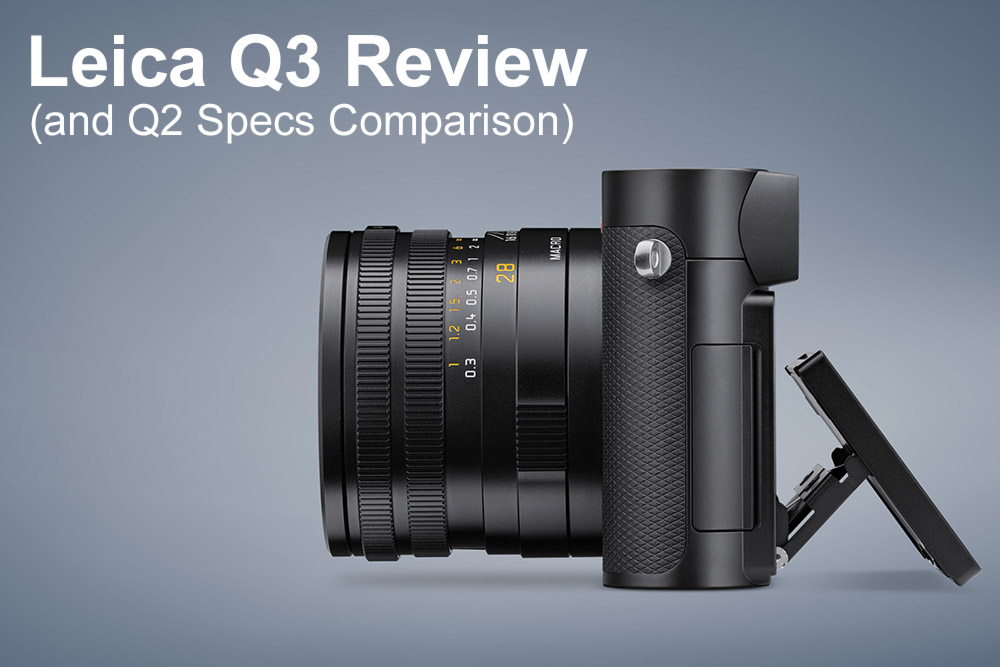
Leica virtually has their own niche with the Q-Series of cameras, which are based around portability and high image quality, delivered by a full-frame sensor in a compact body, with a wide angle fixed lens. Despite being an all-in-one compact, the Q3 arrives with state-of-the-art features including a 60 megapixel sensor and 8K video.
But these are just the highlights. Our Leica Q3 Review includes an in-depth specs comparison with the previous generation Q2, in order for you to decide whether this is the perfect camera for your visual storytelling. Spoiler, it sounds incredibly impressive, because it is just that.
Leica Q3 release date
The Leica Q3 was released 25 May 2023, which is around three years after the hugely popular Q2 launch. Leica has poured all of the latest technology into new generation camera, leaving only key elements such as the fixed Summilux 28 f/1.7 ASPH. lens and IP 52 weather sealing untouched.
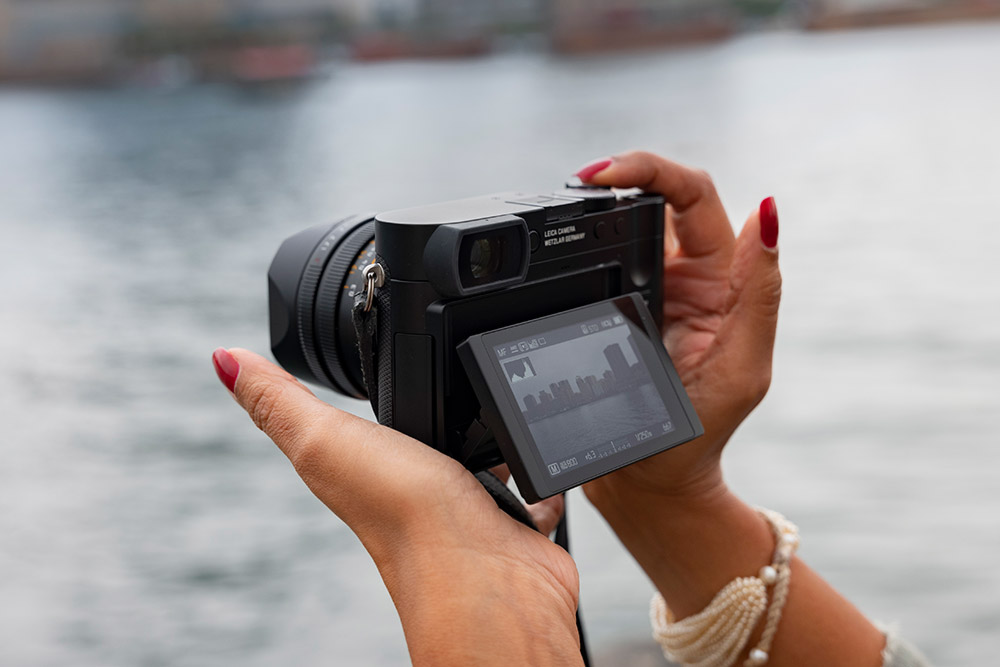
How much does the Leica Q3 cost?
The new generation Leica Q3 costs £5300.00, which is not to be sniffed at, but compares extremely favourably with the older Q2, which costs £5,100.00. When taking into account all of the upgrades, the new model price is justified, highlighting why Leica cameras are worth the cost.
Leica Q3 key specifications
The Leica Q3 packs a host of technology placing it at the very pinnacle of hybrid technology, which is impressive in its’ own right due to being crammed into a relatively compact all-in-one camera. Key specifications which you need to know from the outset include:
- 60 megapixel Backside Illuminated full-frame CMOS sensor with triple resolution technology
- Maestro IV image processor
- New Hybrid AF system with sensor-level phase detection autofocus
- Up to 8K video with H265 and ProRes
- 15fps burst shooting
- IP 52 weather sealing and robust full metal housing
- Improved connectivity and battery life
- UHS-II (recommended) SD card slot
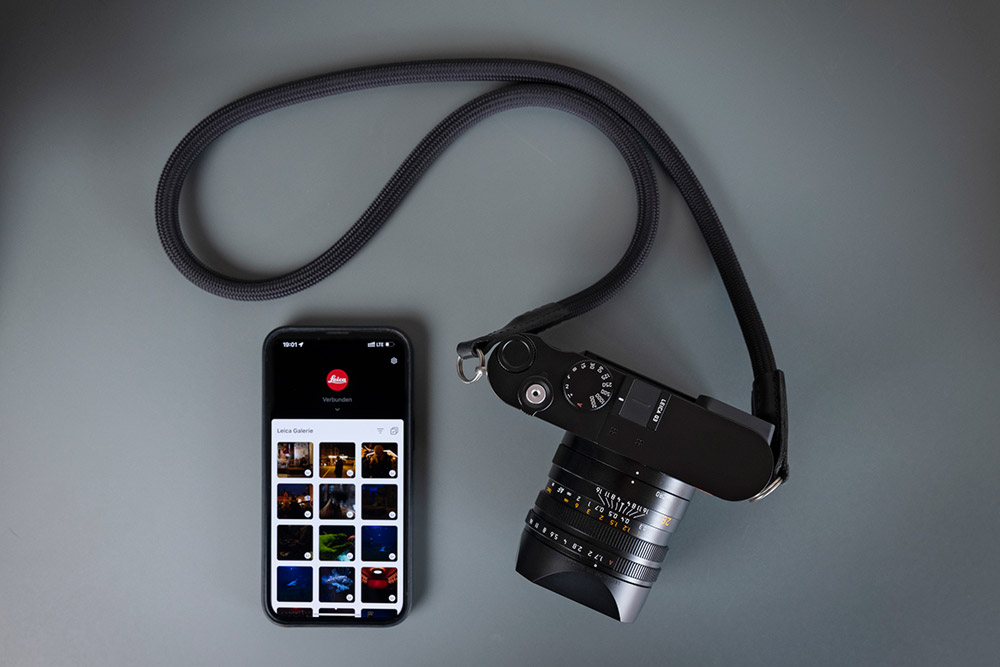
Leica Q3 vs Q2 specs comparison
The table below highlights key differences between these two generations of Leica Q cameras, which are both formidable models in their own rights.
|
|
||
|
Sensor / pixels |
47.3 MP CMOS Sensor |
60.3 MP CMOS BSI Sensor |
|
Fixed Lens |
Leica Summilux 28 f/1.7 ASPH., 11 elements in 9 groups, 3 aspherical elements |
Leica Summilux 28 f/1.7 ASPH., 11 elements in 9 groups, 3 aspherical elements |
|
Image Processor |
Leica Maestro Series |
Leica Maestro IV Series |
|
IP Rating (weather sealing) |
IP 52 |
IP 52 |
|
Dynamic Range |
14-stops |
14+ stops |
|
Digital Zoom |
28/35/50/75mm |
28/35/50/75/90mm |
|
LCD Display |
3" TFT LCD monitor with approx. 1,040,000 pixels, touch control |
3" TFT LCD monitor with approx. 1,840,000 pixels, touch control, Tiltable |
|
EVF |
OLED, 0.5” 3.68MP |
OLED, 0.5” 5.76MP |
|
Burst Shooting Speed |
10fps |
15fps |
|
ISO Range |
50 – 50,000 |
50 – 100,000 |
|
AF System |
Contrast-detection AF |
Contrast-detection AF, DFD, PDAF + AI |
|
AF Speed |
150ms |
140ms |
|
Video |
C4K / 4K / FullHD MP4 + MOV |
8K / C4K / 4K / FullHD MP4 + MOV, H265, ProRes |
|
HDMI / USB |
NA |
Yes (Type D) / Yes (USB-C 3.1) |
|
Bluetooth / MFI |
Yes / NA |
Yes / Yes |
|
Wireless charging |
NA |
Yes via optional handgrip |
|
Battery |
Leica BP-SCL4 (1860mAh) |
Leica BC-SCL6 (2200mAh) |
It’s safe to say this is a huge leap forward for the Q3, surpassing its’ predecessor in virtually every respect. Most notably the Leica Q3 adds higher resolution across the board, from the 60MP BSI sensor, to 8K video recording and both of the screens. This is complemented by a faster processor and ergonomic body updates, which are mentioned below.
AF will be noticeably improved through the addition of sensor level phase-detection, while charging and sharing your images is more convenient than ever.
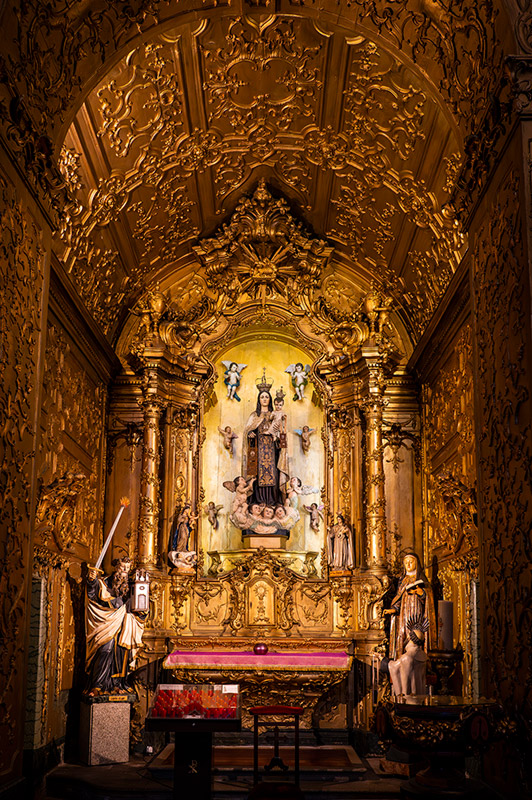
Sample church scene. Camera settings: 1/250 sec. f/4. ISO 4000
What is Leica Triple Resolution technology?
Leica’s Triple ResolutionTechnology is useful when you want to capture smaller file sizes than the full resolution, yet still take images using the full sensor area. In the case of the Q3, this means you can capture DNG files in 60MP, 36MP and 18MP (L, M and S).
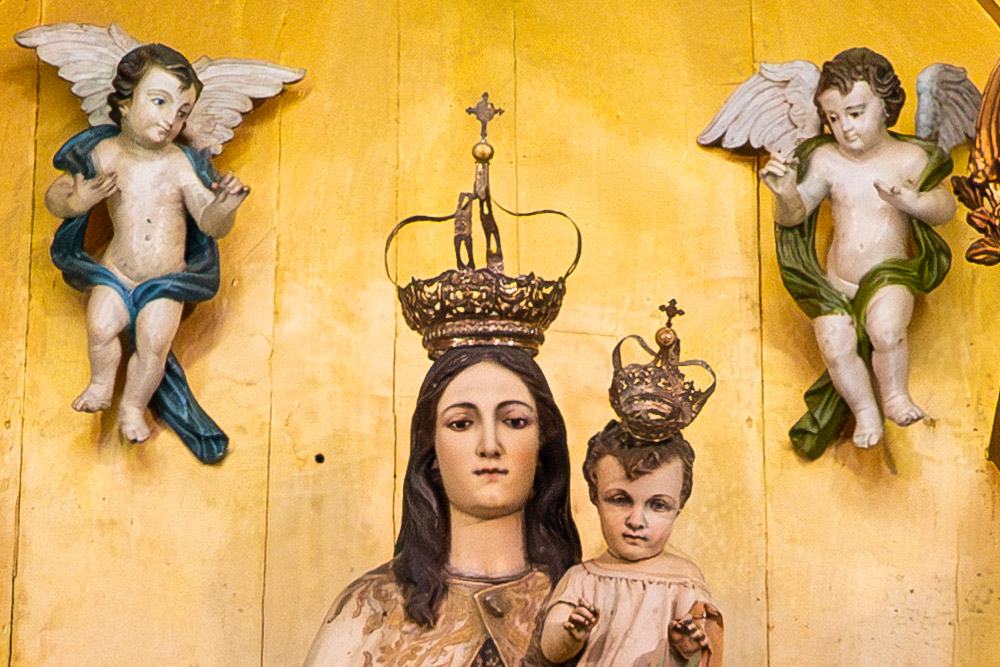
100% crop of the image above and wow, considering this was shot at ISO 4000 the results are incredibly detailed with low noise exhibited.
Leica Q3 Image quality
The Leica Q3 is a flagship compact camera and delivers image quality to match, with DNG 14 bit RAW files measuring 9520 x 6336 pixels in the highest 60.3MP. There’s no low-pass filter either, which helps to increases image sharpness, adding only a minor risk of moiré in certain situations.
Low light performance is excellent, which is consistent with all Leica cameras across M Rangefinders, mirrorless SL and this compact Q series camera. With a base ISO of 50 (manual) and ISO 100 in Auto right through to ISO 100,000 for night time you have plenty of latitude for shooting in any lighting conditions.
The Summilux 28 f/1.7 ASPH fixed lens is responsible for much of the image quality and it does a terrific job, as do the majority of other Leica lenses, which are known for rendering unique image quality. The f/1.7 to f/16 aperture range can be controlled in 1/3 EV increments, providing everything from a razor thin focal plane for portraits, to deep focus for landscapes and similar shots where you want extra depth of field.
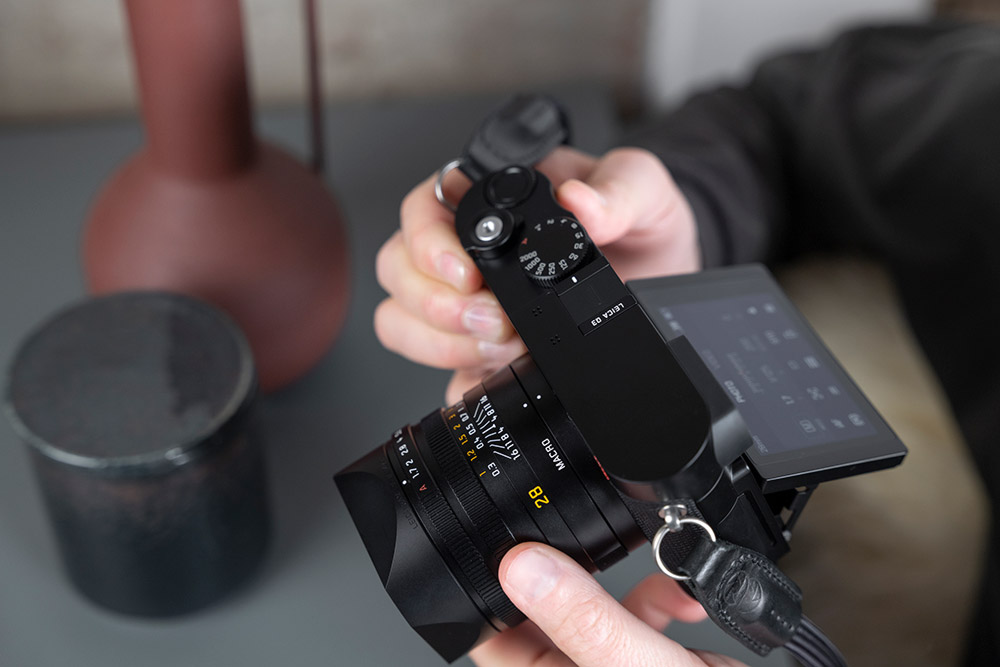
Why is the New Hybrid AF system better?
Phase-detection autofocus (AF) outshines contrast-detection AF due to superior speed and accuracy. By employing dedicated phase-detection sensors, PDAF swiftly calculates focus by measuring the phase difference between light rays reaching different parts of the lens.
This enables faster and more precise autofocus, making it ideal for capturing moving subjects, shooting in low light conditions and achieving sharper results overall, where contrast-detection AF relies on analysing image contrast, which is comparatively slow and less efficient.
What are the benefits of the higher resolution EVF and LCD?
Leica cameras are all about enjoyment and immersion into the moment, and the higher resolution EVF and LCD in the Q3 provide a sharper, more detailed representation of a scene, which makes for a clearer view when composing. Increased clarity also helps in assessing exposure, colour accuracy and focus, enabling you to make more informed decisions while taking your shot.
Overall, a higher resolution Tilting LCD enhances usability, image assessment and shooting versatility, empowering photographers to capture their vision with greater confidence and accuracy.

Sample evening scene. Camera settings: 1/250 sec. f/2. ISO 2500
Faster 15fps burst shooting
Although this isn’t a sports and action camera, increasing burst shooting to 15fps (in 12-bit RAW) allows you to capture fast subjects in motion. When combined with the new AF system you have a better chance of nailing the decisive moment, benefiting anything from fleeting expressions in a portrait to performances and street photography.
While the buffer isn’t huge, you are able to capture a very respectable 63 images at full resolution when shooting at the fastest burst rate, or up to 164 images at 2fps. It would perhaps have been nice to see the addition of internal memory or Faster CFexpress cards, but the upside is that SD memory cards are ubiquitous and you probably have a number already.
Leica does recommend faster UHS-II cards in order to capitalise on the resolution and speed, and you should consider having plenty of external hard drive space to store the 70MP file sizes at full resolution.
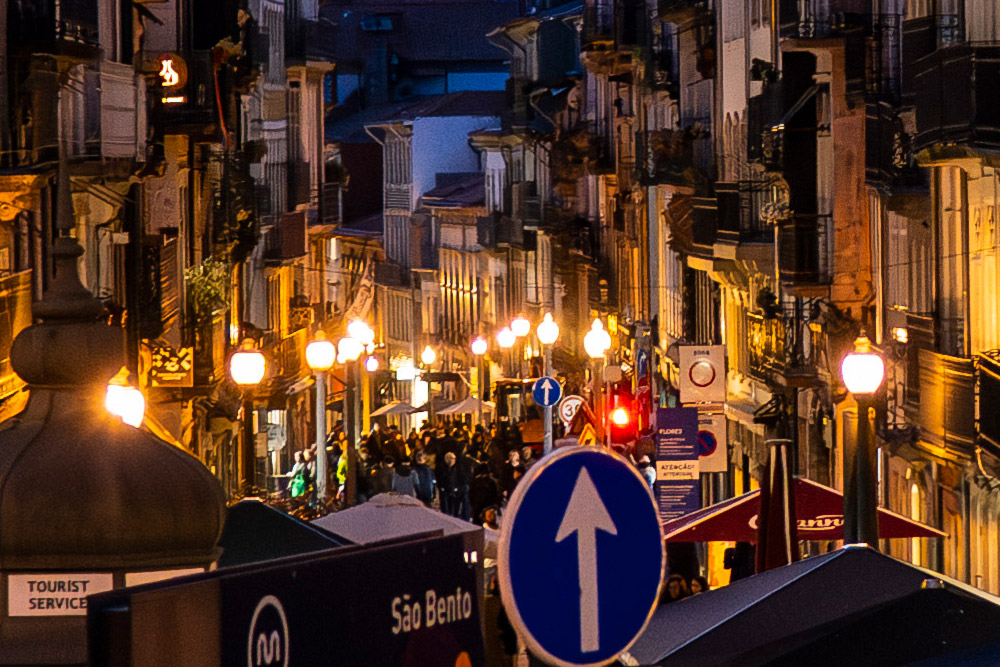
100% crop of the image above
What is high-speed WiFi 2x2 MIMO connectivity?
Leica’s decision to add WiFi 2x2 MIMO to the Q3 camera is a bold move, which ensures a number of advantages such as faster data transfer, enabling the camera to send and receive data more efficiently, for quicker transfer of photos and videos to other devices or platforms.
The use of multiple antennas also allows for better signal propagation and increased resistance to signal interference, with improved wireless range and coverage. This is especially poignant when using Leica’s latest version FOTOS 4.0 app to control, review and shoot with the Q3 camera, where you’ll enjoy a more stable and reliable connection. MIMO allows you to connect your camera to smartphones, tablets and laptops without sacrificing performance and gaining 10x the speed for transfers up to 35MB/s.
Leica Q3 handling and usability
Aside from upgrading the OLED EVF to a new higher resolution screen, Leica also enhanced the LCD with more resolution and a new tiltable action. While this strays from traditional Leica handling it offers significantly easier framing of difficult angles, and makes it easier to see the screen by simply adjusting the angle.
The button layout has also been tweaked, with four customisable FN buttons, two buttons above the rear LCD display and a rear dual push button. The pad on the rear also sports a central button, making the whole shooting experience more streamlined and configurable to your workflow.

Q3 video capabilities
With 8K becoming the norm for flagship cameras, it’s perhaps no surprise that Leica has added both C8K (17:9) and 8K (16:9) to the Q3’s video repertoire. You can also record C4K, 4K and Full HD at various frame rates up to 30fps in C8K 4:2:0 / 10 bit with the option to record over HDMI or SD depending on your needs.
The best Leica Q3 accessories
There are no less than 22 Leica Q3 accessories at launch, designed to complement the camera and get more out of your shooting experience. It boasts an ISO accessory shoe with additional contacts for Leica flash units such as the SF 40 Flash and the Leica BC-SCL4 Charger is compatible with the new high-capacity BP-SCL6 Rechargeable Battery, which are always worth stocking up to avoid running out of power.
As the first camera with wireless charing it would be novel to purchase the Leica Q3 Wireless Charging Handgrip HG-DC1 on day one, which requires a QI-compatible Wireless Charging Pad such as the Leica Drop X Wireless Charger.
You can also customise the camera with various thumb supports, such as the Q3 Thumb Support Aluminium Black or Q3 Thumb Support Aluminium Silver and there are three coloured Halfcases to choose between:
- Leica Q3 Halfcase Leather Black
- Leica Q3 Halfcase Leather Cognac
- Leica Q3 Halfcase Leather Olive Green
You’ll also find a range of E49 (49mm) coloured lens filters to experiment with:
Who is the Leica Q3 for?
The Leica Q3 is competitive even when compared to the very best interchangeable lens hybrid cameras. If you have the budget and enjoy the distinct quality of Leica images, the Q3 will be the perfect companion for anything from portraits and weddings to street photography, video storytelling and travel. It's also a brilliant choice for everyday snapshots, considered landscapes and thanks to the new 90mm zoom you can even capture more distant subjects, which pique your interest.
Leica Q3 Hands-On Video Review
Reserve your Leica Q3 today and see just how far it can elevate your visual storytelling and impress your audience. Don’t forget to grab a quick free quote for selling camera gear, which can offset the cost of upgrading to this new model.
At launch, you can get up to £2730.00 when trading in a Like New Leica Q2 and up to £1680.00 for the original Q camera when in Like New condition.
Share this post:
By Nick Dautlich on 25/05/2023
Nick Dautlich
Senior Content Writer and Product Reviewer
Nick Dautlich is the Senior Content Writer and Product Reviewer at Park Cameras, with over 15 years of photography experience. A Sony Imaging Professional and expert reviewer, Nick has worked with major brands such as Canon, Sony and Nikon. His work is also featured on Vanguard World UK’s website, Capture Landscapes, and Shutter Evolve. Nick’s photography includes National Trust projects and magazine covers and he is passionate about landscapes and storytelling. Nick also enjoys hiking and teaching his children about nature. Learn more on his profile page.

Trade in your old equipment
Fast and easy trade in service ensures your old gear is collected efficiently and you are paid quickly! It's very simple to trade in your unwanted photography gear. Just head over to our dedicated Sell or Part Exchange page, fill out the details, and we'll get back to you with an offer for your old gear. Take the cash, or put it towards the cost of your new gear. It's up to you! Find out more
sign up to the newsletter
Keep up to date on the latest photography news, events and offers. Sign up now